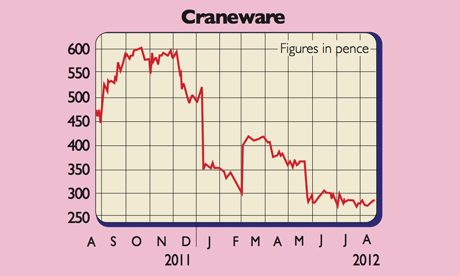
Unlike Britain’s hospitals, America’s are privately run. That means they bill patients, healthcare insurers and the government (eg, Medicaid) separately for any treatment costs. This gets complicated, given that an individual hospital can have up to 15,000 different product lines (such as plasters, stitching and wound dressings), which all need to be billed for correctly.
This is where Craneware, the number-one provider of pricing and billing systems to American hospitals (with a market share of about 25%) fits in. The company’s software not only saves customers a ton of money in reduced administration time, but it also helps maximise revenues by invoicing customers correctly the first time round.
No wonder then that renewal rates on its multi-year contracts are above 90%, which produces high recurring income for the firm.
The only recent problem has been that the industry has embarked on the tricky implementation of electronic patient records. This initiative has sometimes taken precedence over other IT initiatives, in turn causing temporary delays in getting new contracts signed.
But I still think the share price halving over the past 12 months could present an opportunity. Earnings before interest, tax, depreciation and amortisation (EBITDA) for the year ending June 2012 is expected to be up 15% to $11.6m on revenues of $41m. House broker Peel Hunt forecasts sales and underlying EBITDA to jump to $47m and $14.5m respectively for the next year. On this basis I would value the group on ten times the prospective EBITDA. Adjusting for net cash of $23.6m and $1m of deferred consideration liabilities, this delivers an intrinsic worth of 390p per share.
Craneware (AIM: CRW)
Possible pitfalls include concerns over future price pressures from even bigger hospital chains as the firm’s customers consolidate. But any takeovers may actually lead to more business being pushed towards Craneware as rival systems are swapped out for the group’s more popular and robust software.
Other issues to watch include adverse foreign-exchange fluctuations, greater competition and further contract delays. In July, CEO Keith Neilson said that “sales cycles are returning to normal lengths” and “we are in a stronger position than we have ever been”.
It must help that the American government has been putting pressure on hospitals to improve the efficiency of their invoicing after a number of high-profile scandals in which several federal health programmes became the victims of over-billing. As yet only around half the 5,750 hospitals involved have proper revenue assurance systems. Thus Neilson believes there could be a shift in demand to the firm’s audit and compliance applications. Preliminary results are due out on Tuesday 4 September.